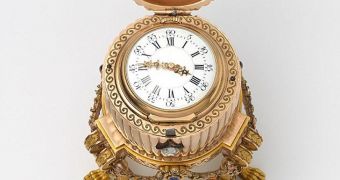A scrap metal dealer form the Midwest who bought an antique ornamental egg in order to melt it down for its gold was very surprised to discover that the piece was in fact a £20 million ($33.2/€23.9 million) Fabergé egg.
The man bought the golden egg from a bric-a-brac market and paid about £8,000 ($13,300/€9,560) for it, thinking he could make a profit by reselling its gold and jewels.
But after reading an article online about an imperial Faberge Easter egg made for Russian royalty, he began to suspect that his new acquisition was actually a very rare piece.
Kieran McCarthy, the director of antiques firm Wartski verified the discovery and confirmed that it was indeed legitimate.
“I could never have dreamed something of this caliber would just walk through our door,” McCarthy said, according to Daily Mail.
“I have been around the most marvelous discoveries in the art world, but I don’t think I’ve ever seen one quite like this – finding this extraordinary treasure in the middle of nowhere,” the expert added.
The rare piece, measuring 8.2cm (3.2in) high, was designed specifically for Russia's Tsar Alexander III and was seized during the Russian Revolution. It was thought to be lost forever, but it turned up on an antiques stall in the US a decade ago.
Its value is so high because there are very few original Faberge eggs still known to exist. Only 50 Imperial Easter Eggs were designed by Carl Fabergé for the Russian Royal Family.
The egg comes with a precious Vacheron Constantin watch which was given by Alexander III to his wife Empress Maria Feodorovna for Easter in 1887.
The last time the egg had been seen in public was in March 1902 at an exhibition in St Petersburg.
Given that the buyer didn’t find a person willing to pay the price he was asking for it, the egg remained on his kitchen shelf for years, until he found the article that made him suspect that it was much more valuable than he initially thought.
McCarthy negotiated the egg’s sale to a private collector. The art piece will be displayed at Wartski in London from April 14 to 17.
In an interview with the Telegraph, the Fabergé specialist Christopher McDonald offered some tips on how to identify a genuine Fabergé egg.
“If you're offered a piece, I would try and see if there's any provenance behind. Many pre-revolutionary pieces do have a stock number engraved onto them and with the recent discovery of records in Russia ... you can usually refer back to prove that it was on the Faberge inventory,” he said.

 14 DAY TRIAL //
14 DAY TRIAL //